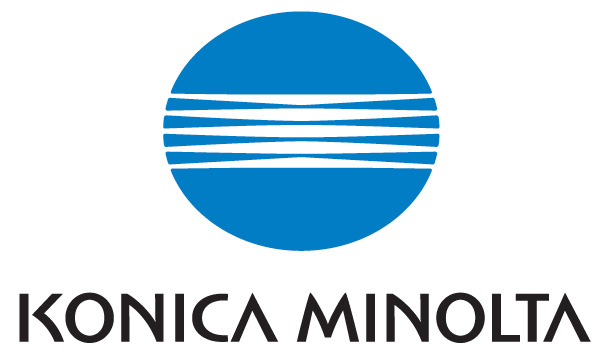The Gold Coast is experiencing strong technological growth. The tech sector has expanded by 66% over the past decade and continues to grow faster than both state and national averages. As businesses take on digital transformation, many are finding that running complex IT systems in-house is becoming too hard and expensive. Managed IT services are stepping in as a practical solution, changing how companies handle technology and cybersecurity.
Understanding Managed IT Services: More Than Just Tech Support
Managed IT services are a complete way to handle technology. Companies hand their IT operations to specialist providers for a set monthly fee. Unlike the old break-fix model that reacts after problems appear, managed services stop issues early. They include monitoring, regular maintenance, and forward planning so systems stay reliable.
Services cover everything from 24/7 monitoring and security management to disaster recovery and future technology planning. For many organisations, managed IT means access to top-level expertise without paying for a large in-house IT team.
Help desk support with clear response times gives staff instant help when problems occur. Remote support reduces downtime and keeps productivity high.
The Current Technology Landscape
Research shows that many Queensland businesses struggle with rapid technology changes. The 2024 Digital Future of Work Report found that 31% cannot keep up with new tools such as AI and cloud systems. This problem also presents opportunities for those who adapt quickly.
The local tech sector is now an economic driver, and companies that adopt new systems can outpace competitors. But the rise of cloud, mobile, and AI has made IT management more complex, especially without dedicated staff.
Cybersecurity adds another challenge. The Australian Signals Directorate’s 2023-24 Annual Cyber Threat Report recorded more than 36,700 calls to its Cyber Security Hotline — a 12% increase in one year. This shows why expert IT management is now essential.
Core Components of Comprehensive Managed IT Services
Proactive Monitoring and Maintenance
Managed IT starts with constant monitoring and upkeep. Tools track network health, server performance, and applications around the clock. Potential problems are found before they cause breakdowns.
Providers also run regular hardware checks to plan for upgrades before failures occur. Security testing spots weak points and fixes them before hackers strike.
Comprehensive Security and Compliance Management
Security is a key part of managed IT. Providers set up strong firewalls, intrusion systems, and device protection. Data is kept safe with encryption, backup routines, and secure storage.
For industries that face strict regulations, managed services ensure compliance. This lowers the risk of heavy fines or reputational damage from breaches.
Strategic Technology Planning and Implementation
Good IT management goes beyond day-to-day operations. Providers work with businesses to match technology spending with long-term goals.
They design cloud migration plans, software integration, and future roadmaps. This ensures IT systems can grow with the company, rather than holding it back.
Financial Benefits and Cost Optimisation
In-house IT teams are expensive. Wages, training, infrastructure, and software all add up. Managed IT often saves money while providing better service.
Monthly fees replace surprise costs from emergency fixes. This makes budgeting easier and cash flow more predictable. Access to a provider’s infrastructure also reduces the need for major upfront investments.
Enhanced Productivity and Operational Efficiency
Managed IT boosts efficiency. Reliable systems mean staff can focus on their jobs instead of fixing problems.
Specialist support means issues are solved faster and rarely return. Onboarding and offboarding staff is simpler too, with secure user accounts, password controls, and permissions handled quickly.
Cybersecurity in the Modern Threat Landscape
In Queensland, 15% of businesses were hit by cyber attacks in the past year. More than half of those targeted were small businesses. Many still rate their readiness as low.
Managed IT providers close this gap with full-scale security services. They use real-time monitoring, advanced malware protection, and global intelligence feeds. This helps protect against the latest attack methods.
Business email compromise is one of the most common threats, making up 20% of reported incidents. Providers help with advanced filtering, authentication, and staff training to reduce these risks.
Disaster Recovery and Business Continuity
System downtime is costly, averaging $5,600 per minute. Managed IT includes tested disaster recovery plans covering data backups, system restores, and alternate operations.
Cloud-based backups keep data safe even if main systems fail. Automated backups remove human error, and data stored in different locations protects against local disasters.
Technology Integration and Scalability
Businesses today need IT systems that scale quickly. Managed IT makes it easy to add or remove storage, applications, or processing power. This flexibility is valuable for growing companies or those with seasonal changes.
Providers also ensure new software integrates smoothly with existing systems. This reduces disruption and shortens the learning curve for staff.
The Strategic Advantage of Professional IT Expertise
Technology moves fast, and few businesses can stay current in every area. Managed IT gives access to specialists in cybersecurity, cloud, networks, and more.
Providers also support new tools like AI, automation, and analytics. With expert help, businesses can use these tools to improve service, cut costs, and stay competitive.
Future-Proofing Business Technology
Emerging technologies such as AI, edge computing, and automation are reshaping industries. Managed IT providers help businesses adopt these tools without heavy research or wasted investment.
Strategic planning ensures today’s systems will still support tomorrow’s goals. Regular reviews keep businesses aligned with best practice and open to new opportunities.
Choosing the Right Managed IT Service Approach
Selecting the right provider means matching services to business needs. Companies should look at their current challenges, growth plans, and goals.
Clear agreements must outline response times, coverage, and performance. Ongoing reviews ensure services keep meeting expectations. Providers should act as partners, aligning technology with business success.
Embracing Our Managed IT Services
Managed IT services like those at Document Solutions provide a smart path to growth, strong security, and predictable costs. Businesses can gain advanced technology support without the high costs of large IT teams.
As threats and systems grow more complex, expert IT management is no longer optional. By working with skilled providers, companies can focus on their strengths while staying secure and future-ready.
The return on this investment comes through higher productivity, better security, and faster problem-solving. Managed IT gives businesses the tools and confidence they need to succeed in today’s digital economy.








